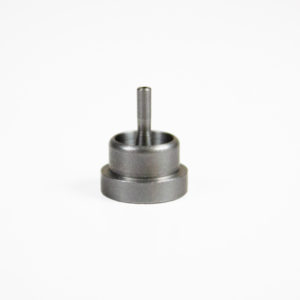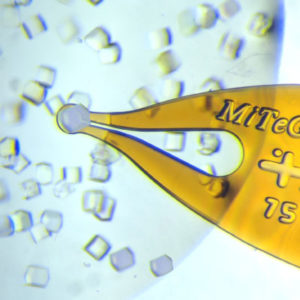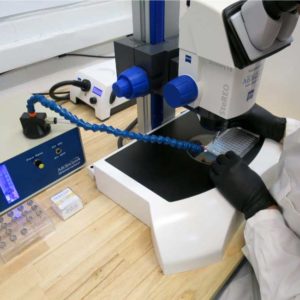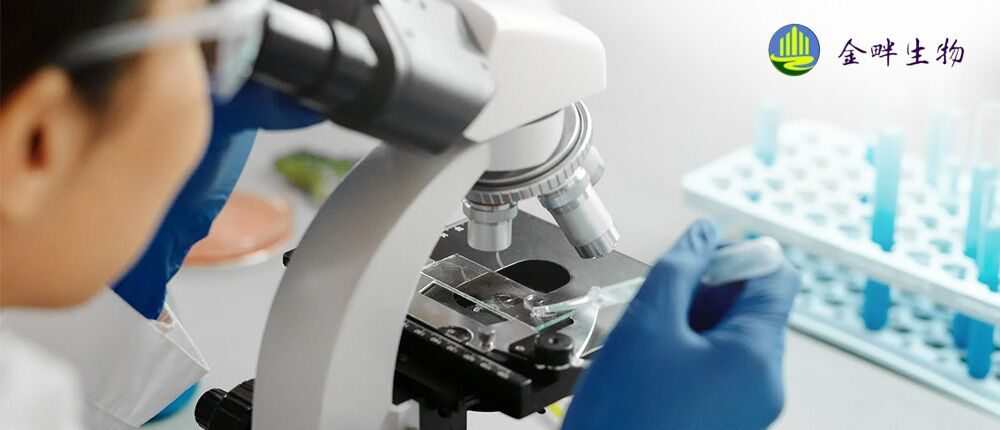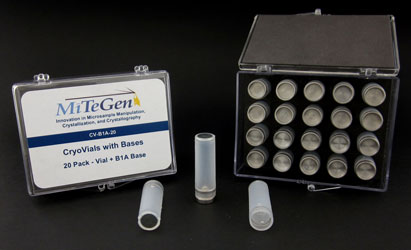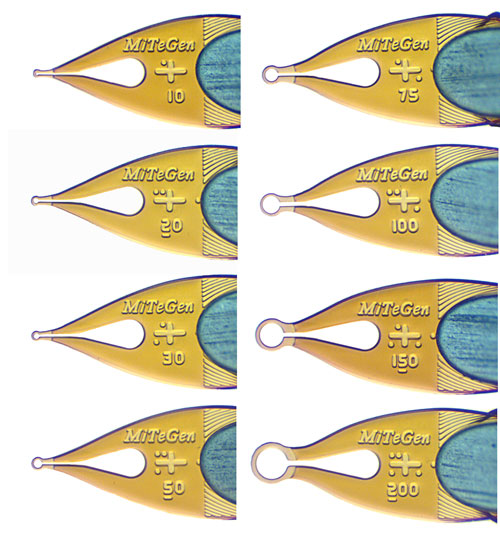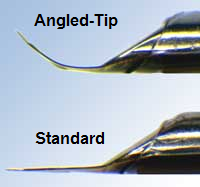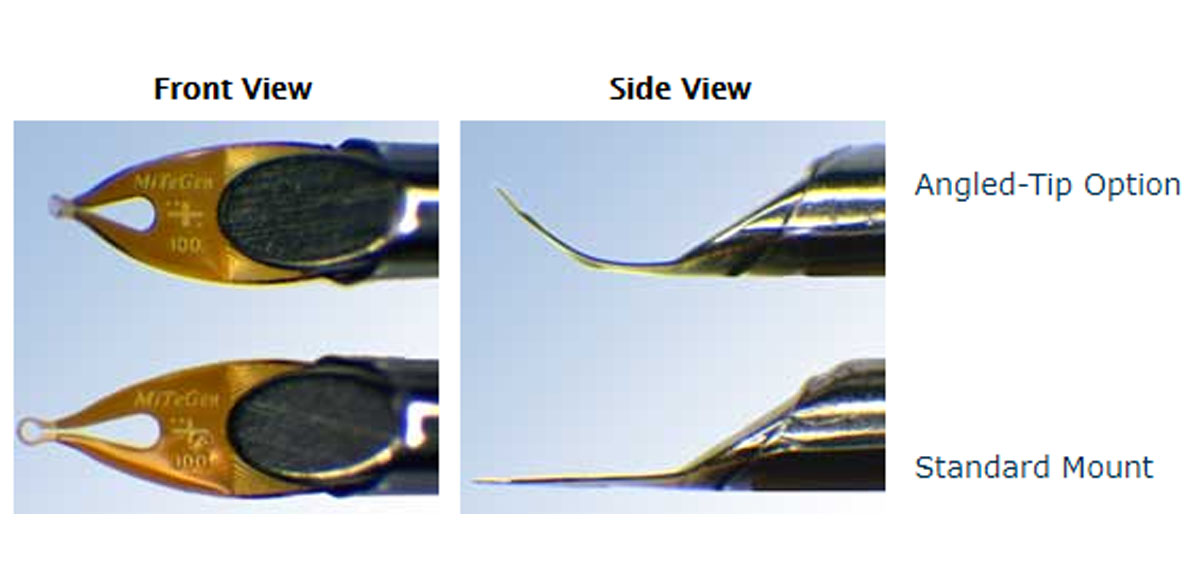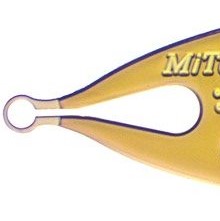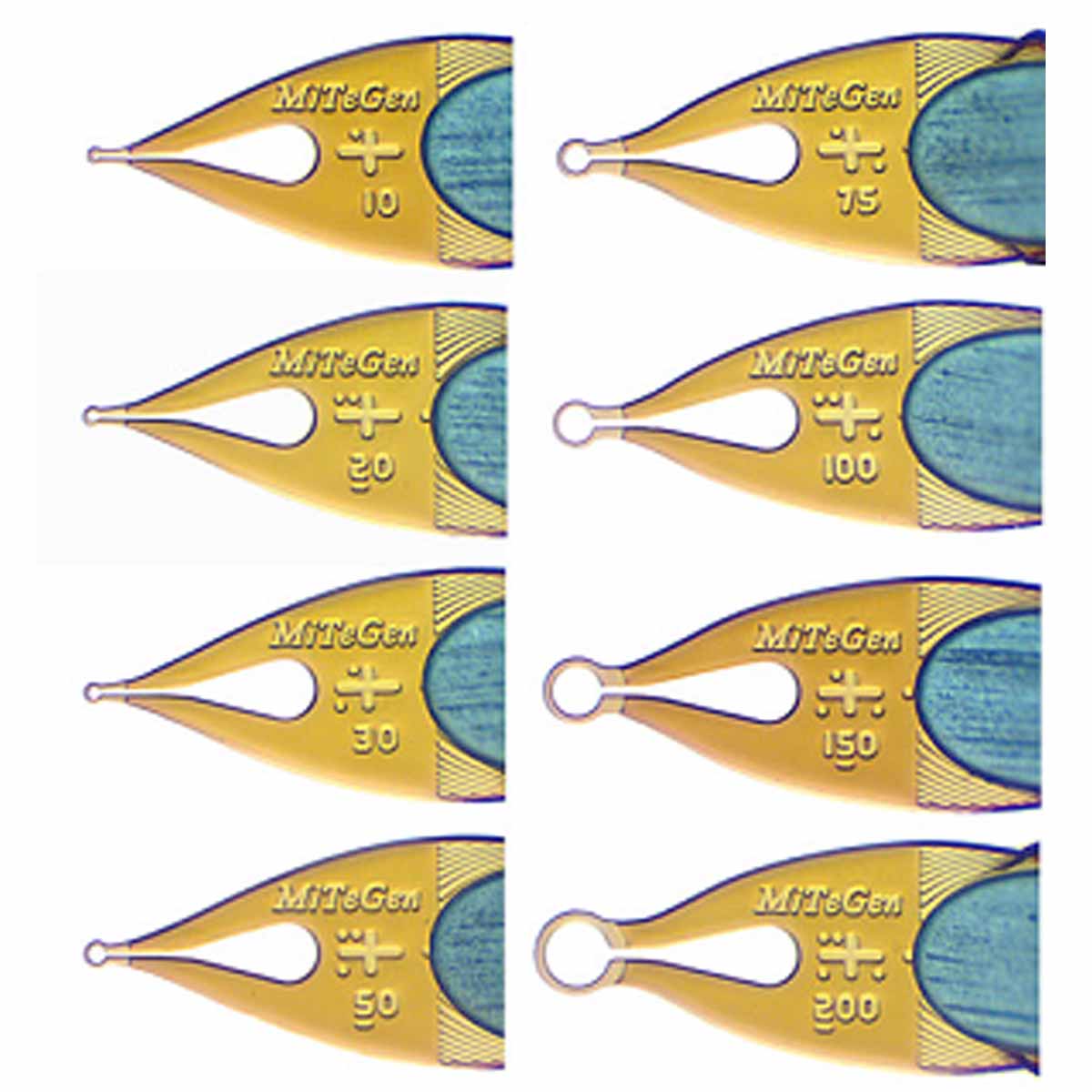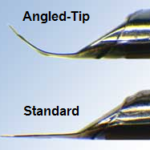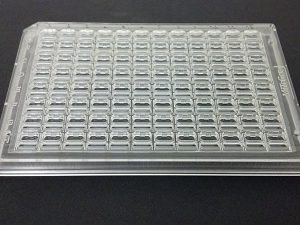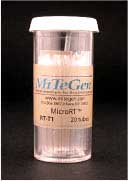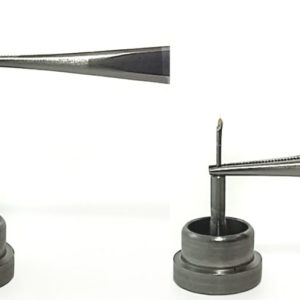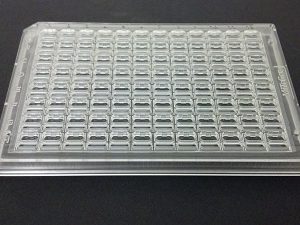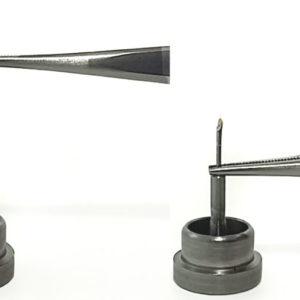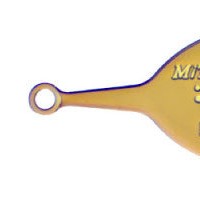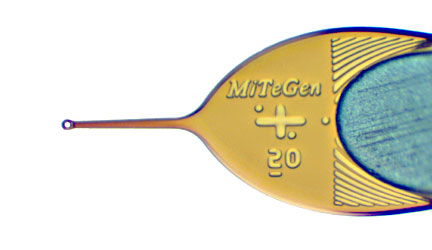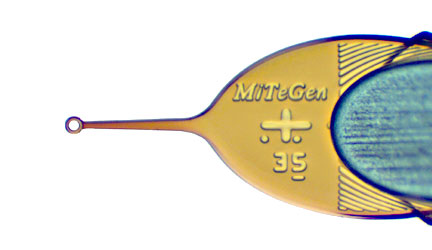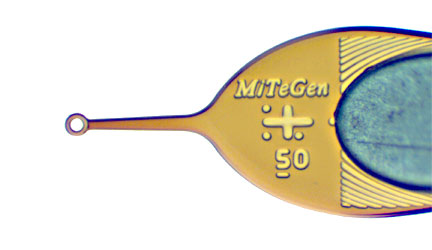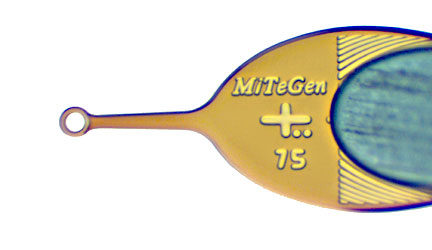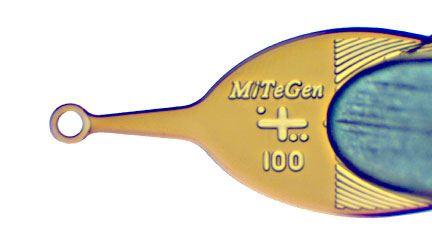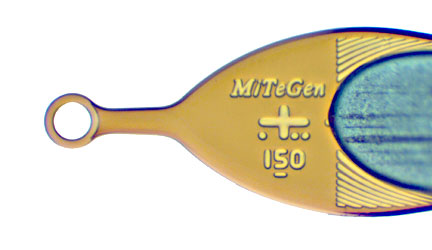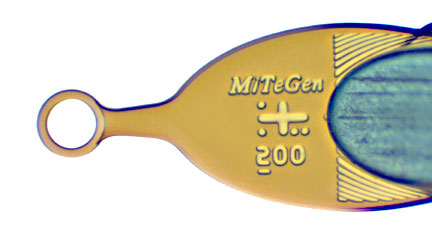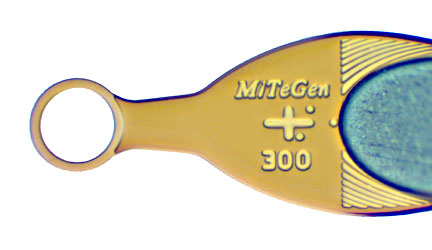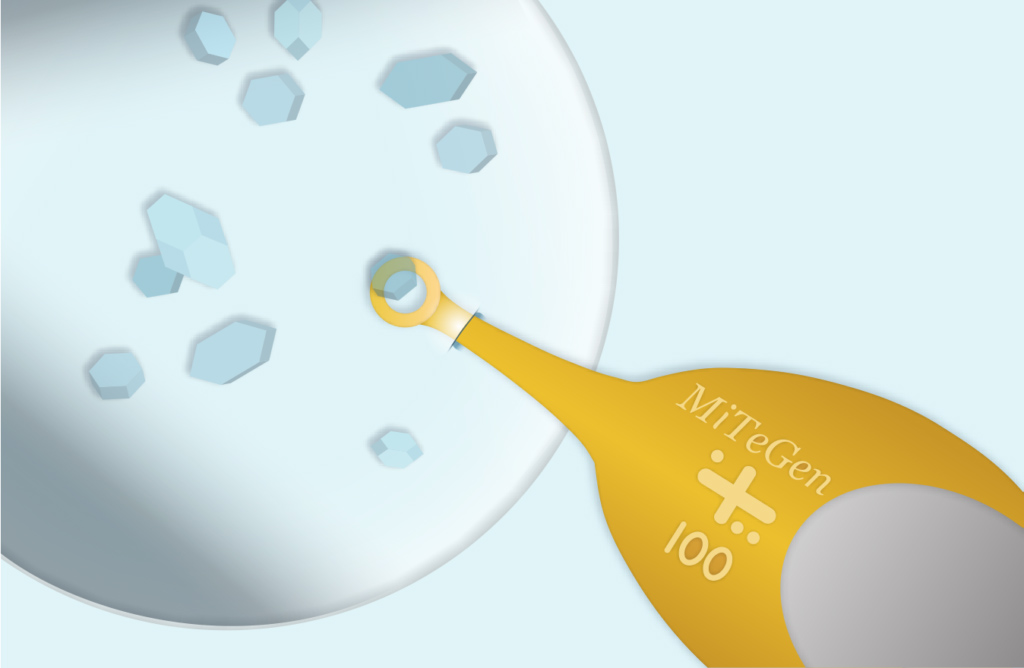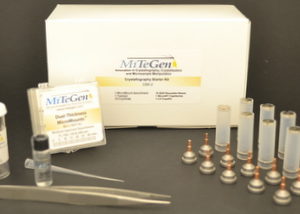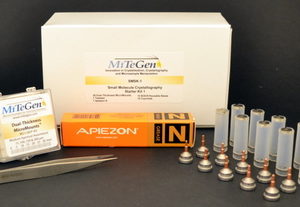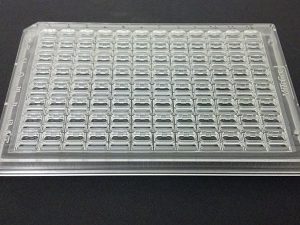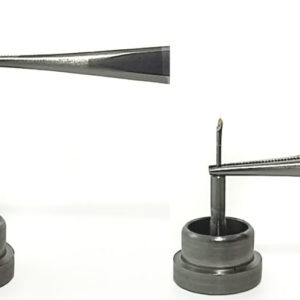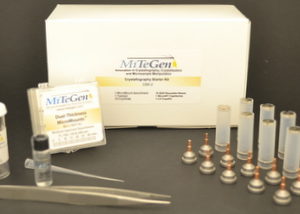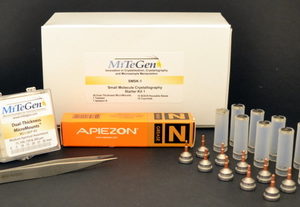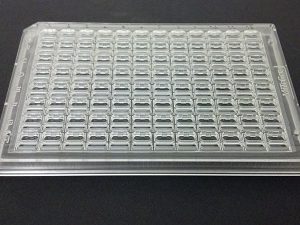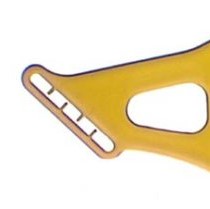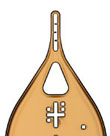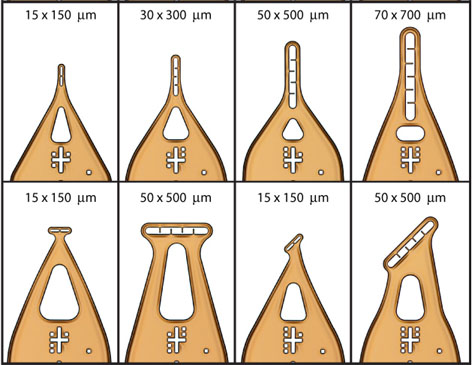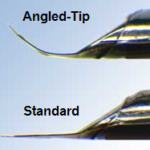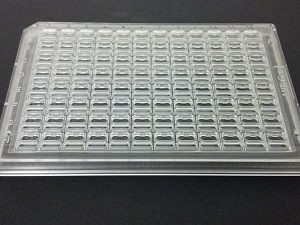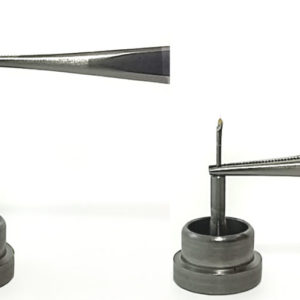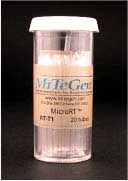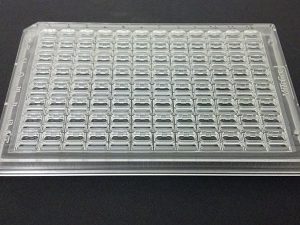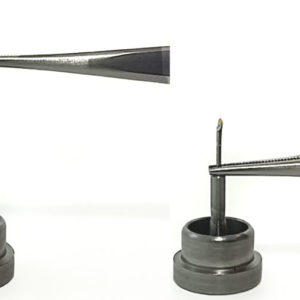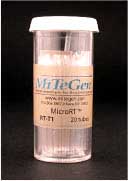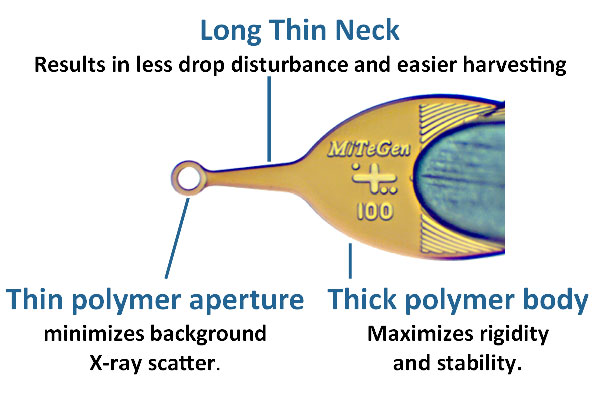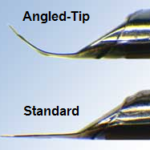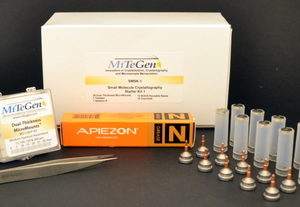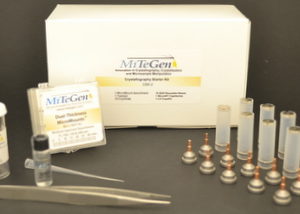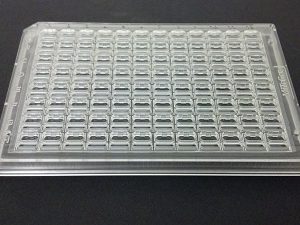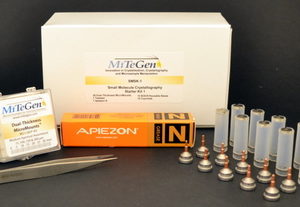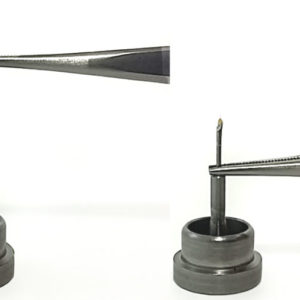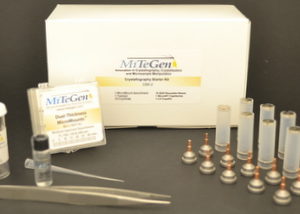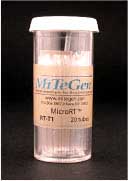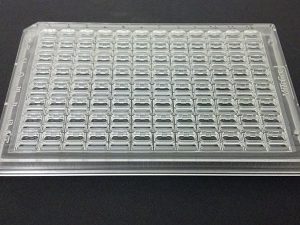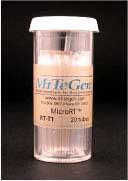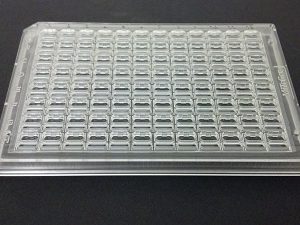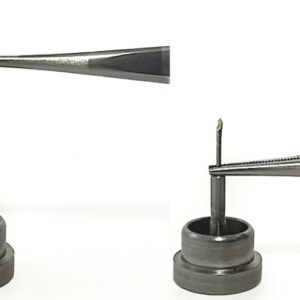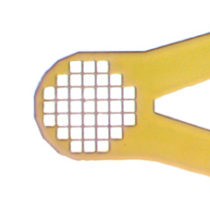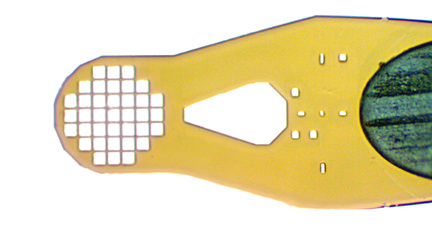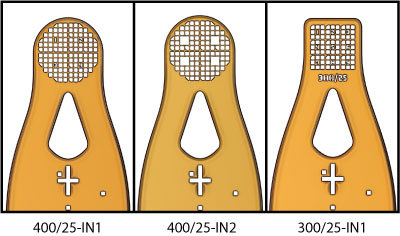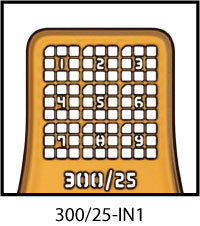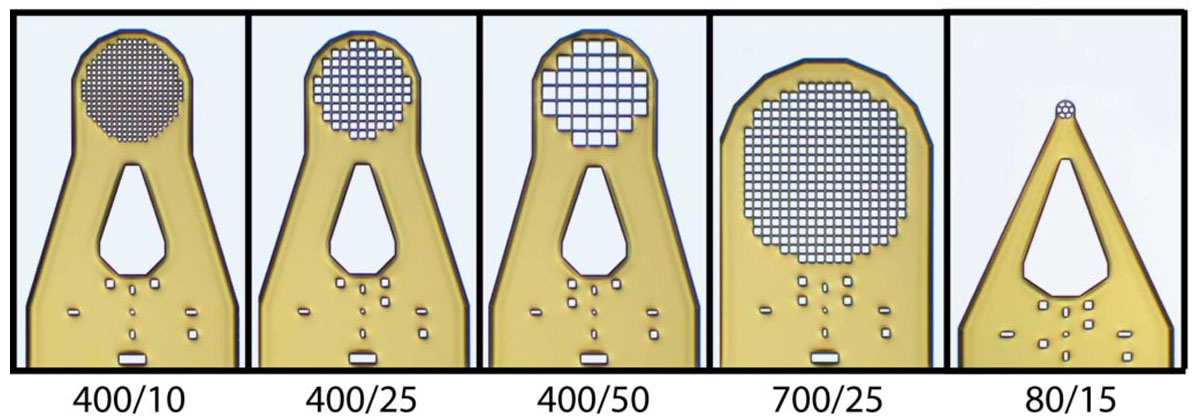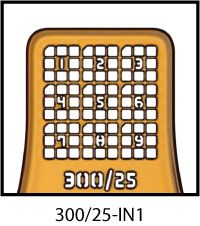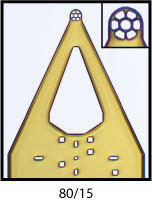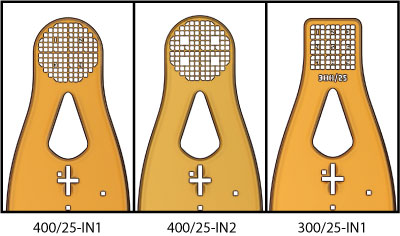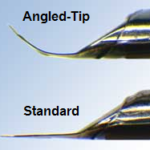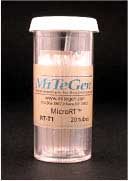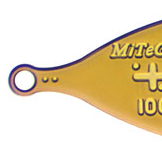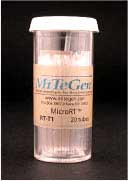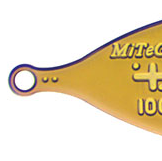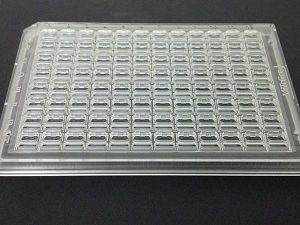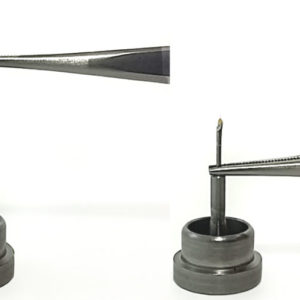MicroLoops E™ are available in a variety of sizes and aperture orientations.
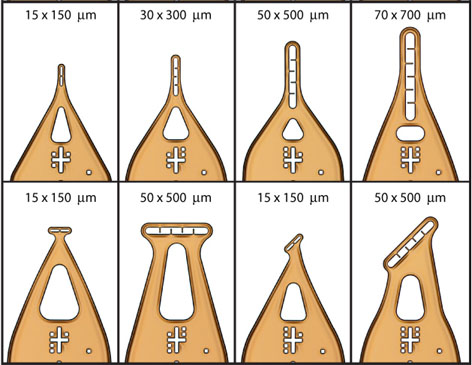
Vertical loops are offered in four different sizes of apertures:
15V– 15 x 150 μm, 30V– 30 x 300 μm, 50V– 50 x 500 μm, and 70V– 70 x 700 μm
Horizontal loops are offered in two different sizes of apertures:
15H– 15 x 150 μm and 50H– 50 x 500 μm
Inclined loops are offered in two different sizes of apetures:
15I– 15 x 150 μm and 50I– 50 x 500 μm
These styles are available in single size boxes of 20 MicroLoops E™ or as three different assortments:
VA1: 5 pins each of 15V, 30V, 50V, and 70V
HA1: 10 pins each of 15H and 50H
IA1: 10 pins each of 15I and 50I
MicroLoops E™ are built on 18 mm / SPINE length rods (pins), which are now standard at nearly all synchrotron beam lines in the world. Other pin lengths are also available: (11mm, 19mm, and 25mm)
We strongly recommend using heavy-duty, serrated-tip tweezers to handle MicroLoops E™.
MicroLoops E™ are compatible with all standard X-ray hardware and can be inserted in 0.7 mm mechanical pencils or micromanipulators for easy handling.
Needle and rod shaped crystals pose special challenges. They are easily cracked and broken during retrieval. They are difficult to position over or within the aperture of standard circular-aperture loops. When loop mounted, they tend to be surrounded by too much liquid. This liquid increases background X-ray scatter; it can exert forces that crack the crystal during flash cooling; and it can crystallize to produce ice diffraction rings.
MicroLoops E™ can help you overcome these challenges. These loops have elliptical apertures that more closely match the crystal’s shape. Elliptical apertures provide just the right support to minimize cracking during retrieval and mounting, and to minimize excess surrounding liquid. Small flexible fingers within the aperture provide additional support, and allow each aperture to be used with a wider range of crystal sizes.
If cracking still occurs, use a smaller X-ray beam and search for an uncracked region with small mosaicity.
Vertical, horizontal and inclined apertures provide flexibility in sample retrieval and data collection. Vertical apertures tend to be easiest to use. Use a horizontal aperture to gently push on and then slide under a crystal that has adhered to the bottom of a well or to a glass slide
Inclined apertures can provide more efficient data collection. Rod shaped crystals must be carefully oriented in order to collect complete data sets with minimum X-ray exposure. The rod axis often corresponds to a crystal symmetry axis. If this axis lies along the spindle (rotation) axis or if the crystal is triclinic, parts of reciprocal space may be inaccessible. Dauter (Acta Cryst D (1999) 55, 1703-1717) emphasizes the value of collecting complete, high-quality data sets for improved phasing and refinement, and discusses how to orient the symmetry axis relative to the rotation axis for optimal data collection.
MicroLoops E with inclined apertures make it easier to place your crystal near the optimal orientation. To reposition a crystal to a better orientation, try using a MicroTip™ from MicroTools Kit 2. For low-symmetry crystals, use two crystals, one on a vertical loop and one on an inclined loop, to collect a complete data set.
Kappa diffractometers (available on some beamlines) allow the crystal to be rotated about any axis, and provide a more elegant solution to this problem.
MicroLoops E™ 建立在 18 mm / SPINE 长度的杆(销)上,现在世界上几乎所有同步加速器光束线都是标准的。也可提供其他引脚长度:(11mm、19mm 和 25mm)
我们强烈建议使用重型锯齿尖镊子来处理 MicroLoops E™。
MicroLoops E™ 与所有标准 X 射线硬件兼容,可插入 0.7 毫米自动铅笔或显微操作器中以便于操作。
针状和棒状晶体提出了特殊的挑战。它们在检索过程中很容易破裂和折断。它们难以定位在标准圆形孔径环的孔径之上或之内。当回路安装时,它们往往被过多的液体包围。这种液体会增加背景 X 射线散射;它可以在闪冷期间施加使晶体破裂的力;它可以结晶产生冰衍射环。
MicroLoops E™ 可以帮助您克服这些挑战。这些环具有更接近晶体形状的椭圆孔。椭圆孔提供恰到好处的支撑,以最大限度地减少检索和安装过程中的破裂,并最大限度地减少周围多余的液体。孔径内的小柔性指提供额外的支撑,并允许每个孔径与更广泛的晶体尺寸一起使用。
如果仍然出现开裂,请使用较小的 X 射线束并搜索具有小镶嵌性的未开裂区域。
垂直、水平和倾斜的孔径为样品检索和数据收集提供了灵活性。垂直孔径往往最容易使用。使用水平孔轻轻推动,然后在粘附在孔底或载玻片上的晶体下方滑动
倾斜的孔径可以提供更有效的数据收集。棒状晶体必须仔细定向,以便以最少的 X 射线曝光收集完整的数据集。棒轴通常对应于晶体对称轴。如果该轴位于主轴(旋转)轴上,或者如果晶体是三斜晶体,则可能无法进入互易空间的某些部分。 Dauter (Acta Cryst D (1999) 55, 1703-1717) 强调了收集完整、高质量数据集以改进相位和细化的价值,并讨论了如何相对于旋转轴定向对称轴以实现最佳数据收集。
带有倾斜孔的 MicroLoops E 使您更容易将晶体放置在最佳方向附近。要将晶体重新定位到更好的方向,请尝试使用 MicroTools Kit 2 中的 MicroTip™。对于低对称性晶体,使用两个晶体,一个在垂直环上,一个在倾斜环上,以收集完整的数据集。
Kappa 衍射仪(在某些光束线上可用)允许晶体绕任何轴旋转,并为这个问题提供了更优雅的解决方案。

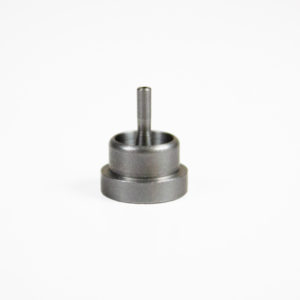 Magnetic Bases/Caps for holding crystal loops. Fully compatible with SPINE style robotic sample…
Magnetic Bases/Caps for holding crystal loops. Fully compatible with SPINE style robotic sample…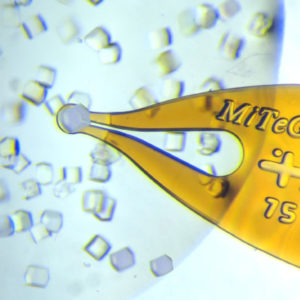 Simplify crystal harvesting, and obtain the best possible data from your crystals, using the most advanced…
Simplify crystal harvesting, and obtain the best possible data from your crystals, using the most advanced…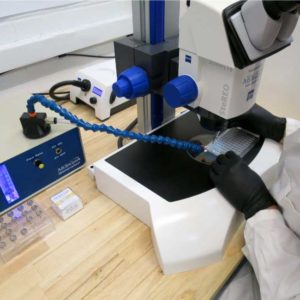 Watershed™ is a humidity controlled workstation for protein crystallography. It prevents drop dehydration…
Watershed™ is a humidity controlled workstation for protein crystallography. It prevents drop dehydration…